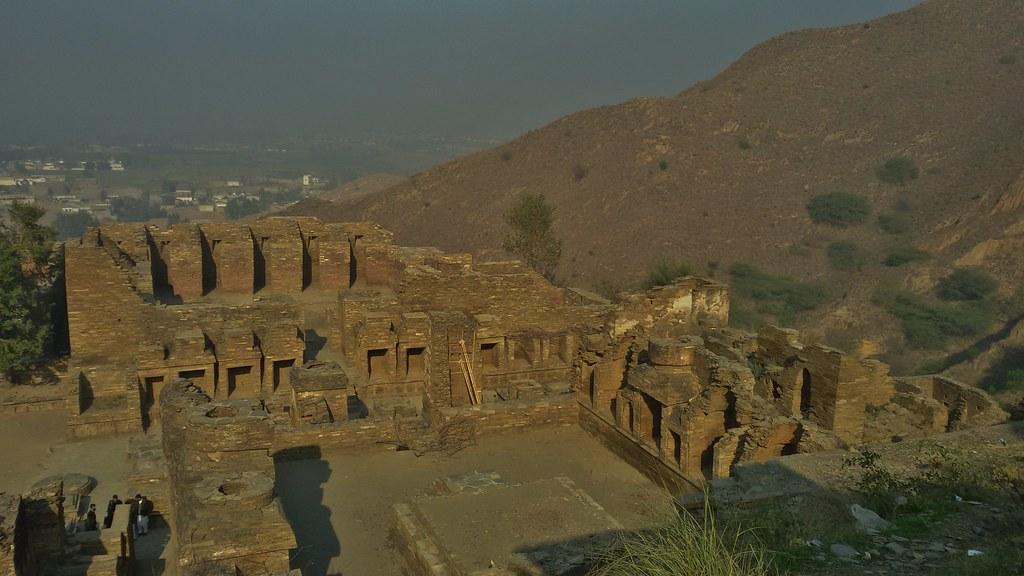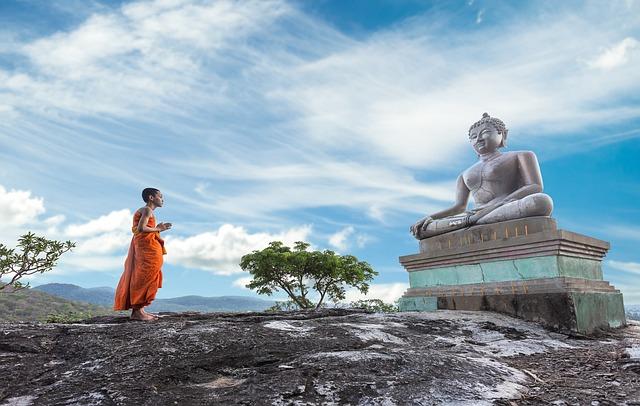In the hushed whispers of ancient forests and the rhythmic chants echoing through time-worn temples, the origins of meditation emerge as a profound tapestry woven through the spiritual and philosophical landscapes of early Eastern cultures. From the mist-shrouded peaks of the Himalayas to the serene riverbanks of the Yangtze, meditation took root as a sacred practice, inviting seekers into a realm of inner stillness and enlightenment. This exploration journeys through the ages, unraveling the threads of history to reveal how diverse Eastern civilizations—each with their own unique traditions and beliefs—nurtured the blossoming of meditation. As we delve into the annals of time, we uncover not just the genesis of a practice, but the timeless quest for harmony between mind, body, and spirit that continues to resonate in our modern world.
Roots of Serenity exploring Meditations Ancient Beginnings
The practice of meditation is a journey that takes us back thousands of years, weaving through the rich tapestries of early Eastern cultures. The intricate philosophies of ancient India, China, and other regions were the fertile grounds where meditation took root, blossoming into various forms and practices. In ancient India, meditation was deeply intertwined with the spiritual texts of the Vedas and Upanishads. It was seen as a path to attain higher states of consciousness and self-realization, an essential part of the yogic tradition. The sages and seers of these times believed that through meditation, one could transcend the mundane and connect with the divine essence within.
Meanwhile, in ancient China, the seeds of meditation were nurtured by the philosophies of Taoism and Confucianism. These traditions emphasized harmony with nature and the universe, advocating for a meditative state that aligns one’s inner self with the Tao, or the natural order. Key practices included:
- Qigong: A holistic system of coordinated body posture and movement, breathing, and meditation used for health, spirituality, and martial arts training.
- Zen Buddhism: A meditative discipline that seeks enlightenment through direct intuition and interaction, beyond the traditional scriptures.
These ancient cultures laid the foundation for the diverse meditative practices we know today, offering timeless wisdom that continues to guide modern seekers on their quest for inner peace and serenity.
Unveiling the Mystical Practices of Early Eastern Traditions
In the ancient landscapes of early Eastern civilizations, the practice of meditation emerged as a profound journey into the self, intertwining with the cultural and spiritual fabric of the time. Rooted in the rich traditions of Hinduism, Buddhism, and Taoism, meditation was not merely a technique but a way of life, a pathway to spiritual enlightenment and inner peace. These mystical practices were designed to transcend the mundane experiences of daily life, leading practitioners to a deeper understanding of their place in the universe.
- Hinduism: Meditation was often practiced through dhyana, a form of focused concentration aimed at achieving union with the divine. The Vedic texts, some of the oldest sacred writings, provide insights into these early practices.
- Buddhism: The teachings of Siddhartha Gautama introduced meditation as a central component for achieving nirvana, a state of liberation from the cycle of rebirth.
- Taoism: Meditation in this tradition focused on aligning with the natural flow of the universe, emphasizing balance and harmony within oneself and the world.
Through these varied yet interconnected practices, meditation in early Eastern cultures laid the groundwork for a timeless pursuit of self-discovery and spiritual awakening, echoing across centuries to influence modern mindfulness techniques practiced worldwide today.

The Philosophical Foundations of Meditation in Eastern Cultures
Meditation, as an ancient practice, finds its roots deeply embedded in the rich philosophical traditions of Eastern cultures. In these societies, meditation was not merely a tool for relaxation but a profound path to spiritual awakening and self-realization. Eastern philosophies like Buddhism, Hinduism, and Taoism have long regarded meditation as a bridge between the earthly and the divine, a practice to transcend the mundane and reach a higher state of consciousness. In these traditions, the essence of meditation is intricately tied to the pursuit of understanding the nature of reality and the self, often leading practitioners to profound insights and inner peace.
- Buddhism: Emphasizes mindfulness and awareness, aiming to free the mind from suffering.
- Hinduism: Sees meditation as a means to achieve Moksha, or liberation from the cycle of rebirth.
- Taoism: Encourages harmony with the Tao, or the natural order of the universe, through meditative practices.
These philosophical foundations underscore meditation’s role as a transformative practice that goes beyond the physical realm. By engaging with these meditative philosophies, practitioners are invited to explore the depths of their consciousness, challenging their perceptions and fostering a profound connection with the world around them. Such explorations have paved the way for meditation’s enduring legacy, influencing countless generations and transcending cultural boundaries.

Lessons from the Past integrating Ancient Techniques into Modern Practice
Ancient Eastern cultures, particularly in India and China, have long been revered for their profound spiritual practices, with meditation being a cornerstone of their traditions. These early societies viewed meditation not just as a tool for relaxation, but as a pathway to enlightenment and self-realization. By examining these ancient practices, we can draw valuable insights into how meditation was used to cultivate a deeper understanding of the self and the universe. The meditative techniques of the past were deeply intertwined with religious and philosophical teachings, aiming to transcend the ordinary experience of life.
- India: The roots of meditation in India can be traced back to the Vedic texts, where it was initially practiced as a means to attain a higher state of consciousness. Techniques such as dhyana and pranayama were developed to focus the mind and control the breath, fostering a connection between the body and spirit.
- China: In ancient China, meditation practices were influenced by Taoist and Confucian philosophies. These techniques emphasized harmony with nature and the universe, encouraging practitioners to align their inner selves with the external world through mindfulness and deep contemplation.
By integrating these ancient techniques into modern practice, we can enrich our own meditation routines, blending time-honored wisdom with contemporary insights to foster holistic well-being and personal growth.
Final Thoughts
As we draw the final breaths of our journey through the , we find ourselves standing at the confluence of time and tradition. These ancient practices, born in the cradle of civilizations, have traversed the sands of history, whispering their secrets through sacred texts and the silent wisdom of sages. From the serene landscapes of India to the tranquil mountains of China, meditation has woven a tapestry that connects the spiritual aspirations of the past with the present-day quest for inner peace.
In exploring these roots, we uncover not only the diverse paths that meditation has carved across continents but also the universal desire for understanding and harmony that binds humanity. The echoes of these early meditative practices continue to resonate, inviting us to pause, reflect, and reconnect with the essence of our being.
As we close this chapter, we are reminded that the story of meditation is not merely a relic of history but a living, breathing tradition. It is an invitation to embark on our own inner journeys, guided by the wisdom of those who came before us. In the stillness of meditation, may we find clarity, compassion, and a deeper connection to the world around us. And so, with a mindful breath, we release this exploration, carrying forward the timeless legacy of meditation into the tapestry of our lives.
